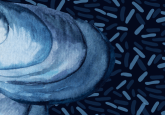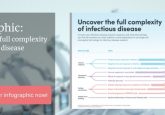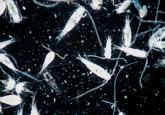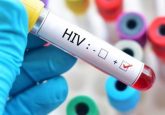Making friends with blood-suckers
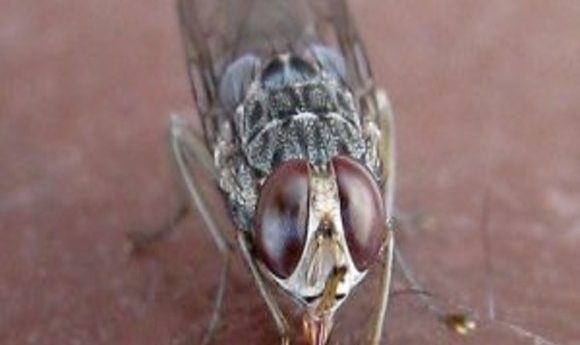
Blood-sucking Tsetse flies may be our newest allies in the fight to prevent infectious diseases.
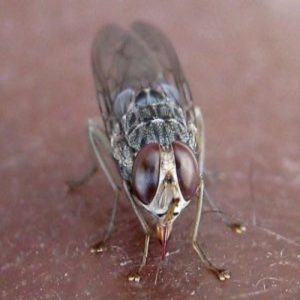
Tsetse fly
Tsetse flies receive a lot of bad press for their role in spreading deadly diseases such as Trypansomiasis or sleeping sickness. Governments and health organizations routinely work to control their populations, particularly in Africa, but even with these serious efforts, these flies remain a threat. Now, in a surprising twist, a group of scientists proposes reversing the role of Tsetse flies; they plan to use them to prevent epidemics.
In a study published in eLife, Frances Prugnolle, from the National Center for Scientific Research (CNRS) in Montpellier, France, and his colleagues use Tsetse flies and their close relatives as “flying syringes” to track blood-borne pathogens in wild animals. By trapping and collecting wild flies and analyzing the blood present in their guts, scientists can learn about current infections in a variety of mammalian, bird, and reptile species.
Almost two-thirds of all infectious diseases in humans arise first in domestic or wild animals. Recent epidemics such as Ebola, Zika, HIV/AIDS, and swine flu all trace their origins to animal infections that made the cross-species jump. Because of this, researchers dedicate a lot of effort to tracking pathogens in wild animals before they move to humans.
However, finding samples for tracking diseases in the wild is notoriously difficult, and researchers are often left scavenging among animal carcasses; analyzing fecal, salivary, or urinary remains for pathogen traces; or trapping and immobilizing animals to collect samples. These methods are limited in their ability to track a large variety of infections and provide only a restricted snapshot of the overall animal population.
This is where Tsetse flies come in. Two major advantages aid these flies in acting as ideal “flying syringes.” First, unlike mosquitoes, both male and female Tsetse flies feed almost exclusively on blood. Second, they are not terribly picky regarding the source of this blood, which means that a large number of animals can be tracked by trapping the same fly species.
To use the blood-sucking flies for sample collection, Prugnolle and colleagues erected numerous flytraps in different national parks of Gabon. When flies were caught in these traps, the researchers examined them to see if they were engorged with blood from a recent meal. Over a period of almost 4 months, the team collected over 4000 flies, and luckily, a little more than 1 in 3 of those flies turned out to have recently partaken of a blood meal. More than 99% of the captured flies were Tsetse flies. The team next isolated this blood meal in the lab and tested the DNA present therein to identify the origin of the blood meal, as well as to determine if any pathogens were present in the blood.
Using this approach, the researchers identified the origin of the blood meal in nearly one-third of the samples, including 20 different vertebrate species such as hippopotamuses, gorillas, pythons, and elephants. Of these samples, 9% were infected with different species of the malaria parasite, some of which had never been identified before.
“These results show that blood meals of the engorged flies can be successfully used to analyze the diversity of known malaria parasites,” Prugnolle, said in a press release.
According to wildlife biologist Kathleen Alexander from Virginia Polytechnic Institute and State University, who was not associated with this study, this method of sampling vectors can improve our understanding of interactions between vectors, humans, and animals. “I think it’s a really novel way of asking questions at a broader population level,” she said.
